Graptosedum Ghosty: The Phantom Plant That Will Haunt Your Garden (In a Good Way!)
Are you looking to add a touch of mystique to your succulent collection? Look no further than the captivating Graptosedum Ghosty – a ghostly beauty that will haunt your garden with its ethereal charm. Get ready to be spellbound by this alluring succulent!
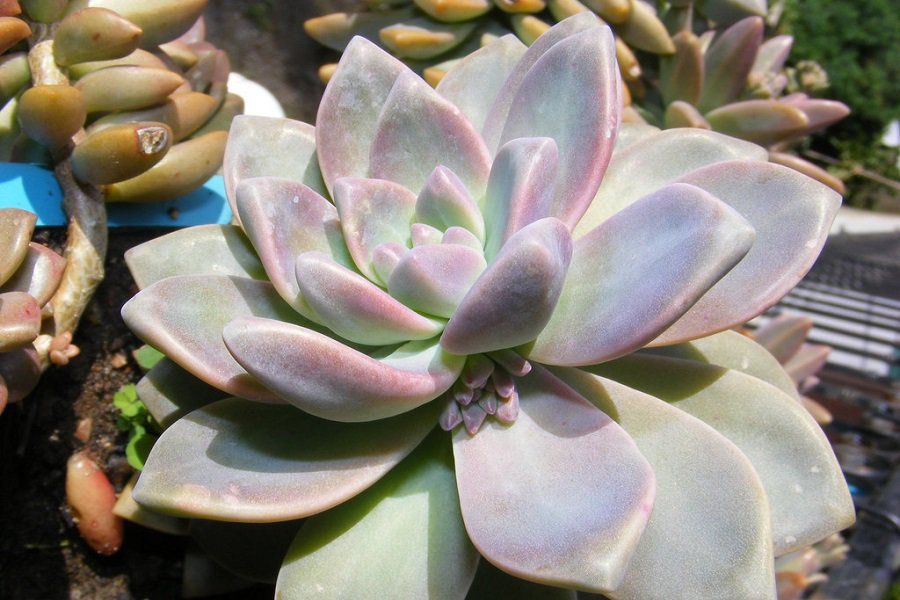
Contents
About Graptosedum Ghosty
The Graptosedum Ghosty is a mesmerizing hybrid that demands a double take. While it may share a ghostly moniker with the Graptopetalum paraguayense (Ghost Plant), this alluring succulent sets itself apart with its unique leaf characteristics. Graptosedum Ghosty’s leaves blush with captivating shades of pink and orange, adding a vibrant twist to its otherworldly appearance.
Rather than the slender leaves of its Ghost Plant cousin, Graptosedum Ghosty boasts more rounded, plump leaves with thickened edges, almost as if they’ve been delicately dusted with farina – a thick, powdery coating that lends the plant an enchanting, frosted appearance.
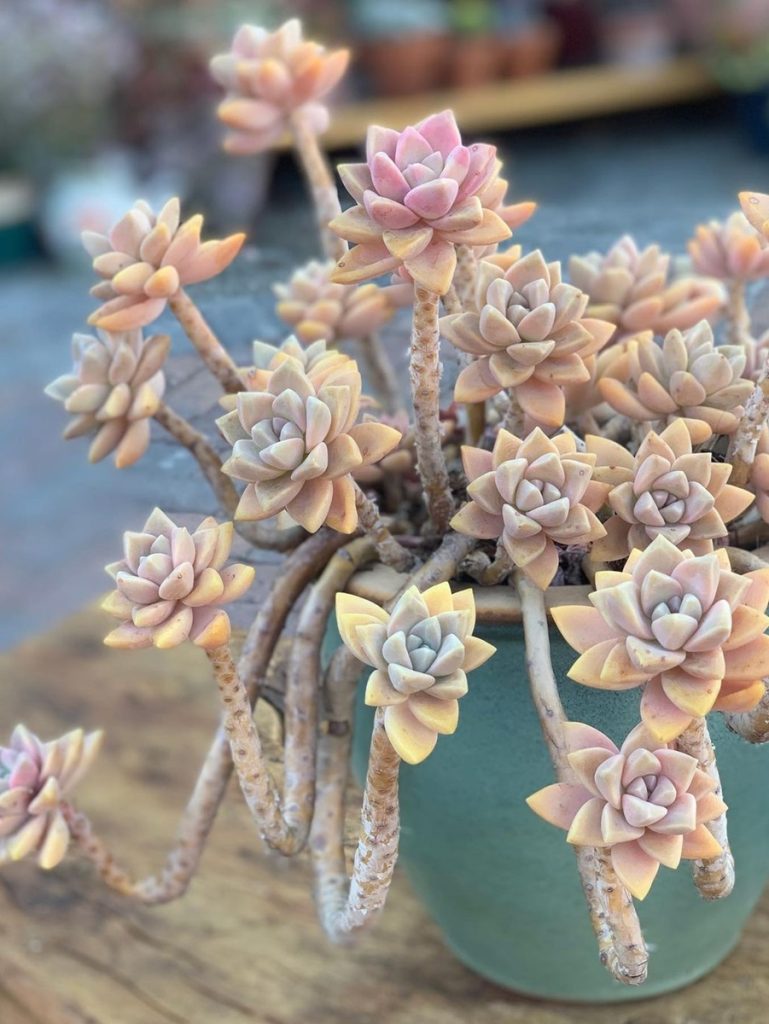
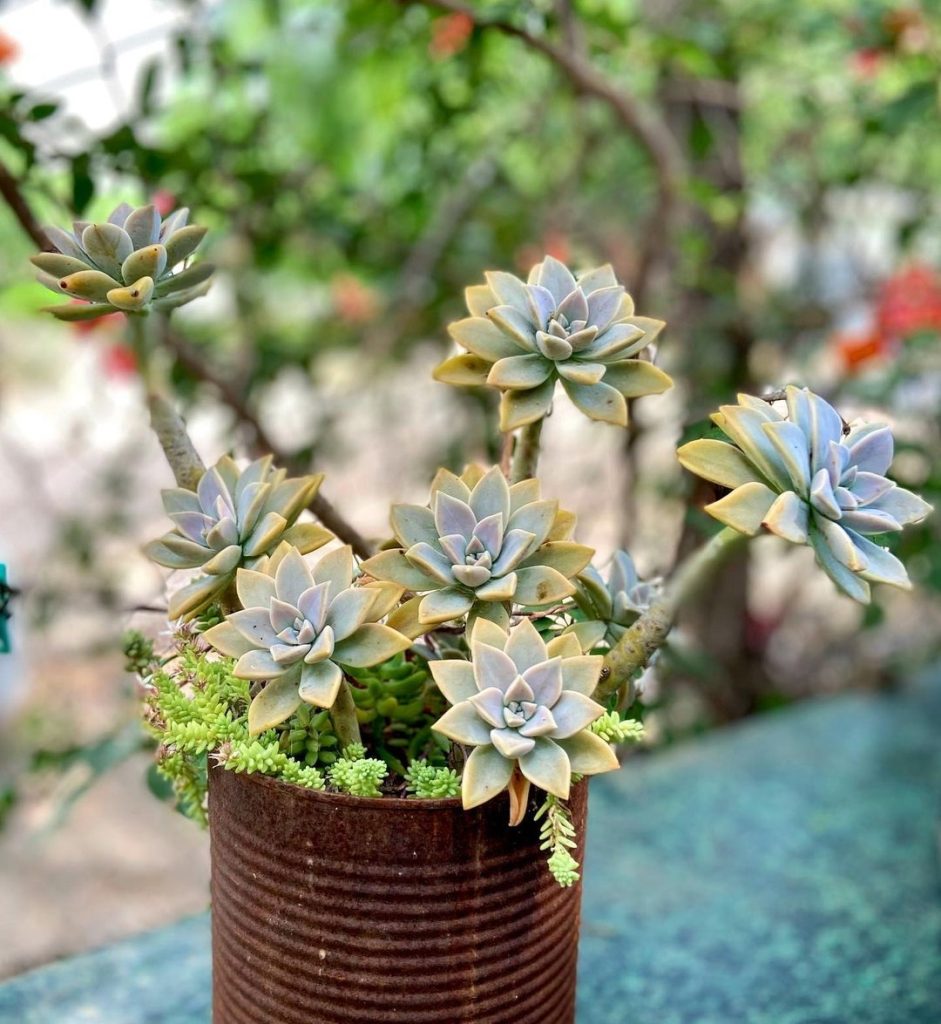
When in bloom, this ghostly gem produces sunny yellow flowers, further enhancing its ethereal charm. It’s believed to be a hybrid born from the union of Graptopetalum paraguayense and an unknown Sedum species.
As the rosettes grow from the base, they create an upward-reaching cluster of these captivating leaves, reaching heights of up to 12 inches and widths of 4 inches. With its unique blend of colors, textures, and forms, the Graptosedum Ghosty is a true standout in the succulent world, beckoning admirers to come closer and unravel its phantasmal mysteries.
Related Post:
5 Special Graptosedum Varieties [With Pictures]
Graptosedum Ghosty Succulent Care Guide
Light Requirements
To unlock the full potential of your Graptosedum Ghosty’s otherworldly charm, it craves ample sunlight. Aim to provide your ghostly companion with at least 4 to 5 hours of direct, bright light daily. Outdoor cultivation during the summer months is highly recommended to ensure your plant thrives.
If your Ghosty doesn’t receive sufficient light, it may become leggy and stretched, reaching out for the nearest source of illumination like a ghostly apparition. Inadequate light can also prevent it from blooming, depriving you of its full spectral splendor.
For indoor cultivation, strategically position your plant near a sunny window, and remember to rotate it periodically to ensure even light exposure. If natural light is scarce, consider investing in a high-quality grow light to mimic the radiance your Ghosty craves.
Watering Wisely
Like most succulents, your Graptosedum Ghosty is a master of water conservation, storing precious moisture in its fleshy leaves. This means that it doesn’t require frequent watering, and in fact, overwatering can lead to a damp, undesirable demise.
The golden rule? Wait until the soil has completely dried out before quenching your Ghosty’s thirst with a thorough watering, ensuring that any excess moisture can drain away freely. Err on the side of underwatering, as root rot can quickly set in if your plant’s roots remain waterlogged.
When watering, be sure to direct the stream directly onto the soil, avoiding any pooling on the rosette itself, which can lead to rot and fungal issues. During the spring and summer months, your Ghosty will require more frequent hydration compared to the winter dormancy period.
Soil Secrets
To ensure your Graptosedum Ghosty feels right at home, it’s essential to provide it with a well-draining, porous soil mix specifically formulated for succulents. A standard cactus potting mix from your local nursery or garden center should do the trick, helping to keep excess moisture at bay and preventing your ghostly companion from becoming waterlogged.
When planting your Ghosty in containers, be sure to choose pots with drainage holes to allow any excess water to escape, as constantly damp soil can lead to the dreaded root rot – a fate no succulent enthusiast wants to befall their prized plants.
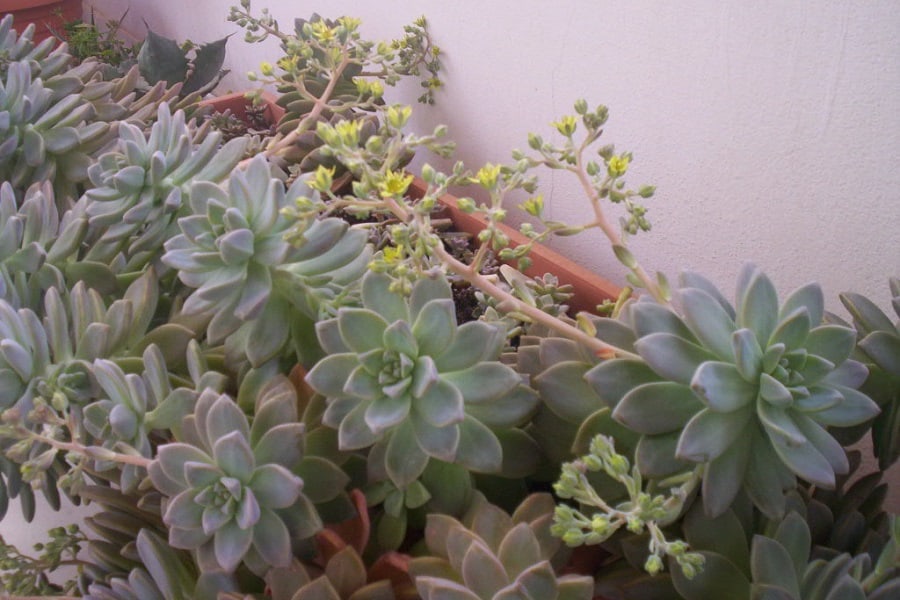
Fertilizing
While not strictly necessary, a light hand with the right succulent fertilizer can encourage healthy growth and a vibrant ghostly appearance in your Graptosedum Ghosty.
Opt for a cactus or succulent-specific fertilizer with a low nitrogen content, diluted to about a quarter of the recommended strength. Feed your ghostly companion every 2 to 3 weeks during the active growing season of spring and summer, avoiding any additional nourishment during the winter months when growth slows.
Climate
Like most succulents, the Graptosedum Ghosty revels in hot, arid conditions. It cannot withstand cold temperatures or chilly drafts, and excessive humidity can lead to its untimely demise via root rot. Indoors, maintain average room temperatures of 65°F to 80°F (18°C to 27°C) and around 40-50% humidity for your ghostly gem to flourish.
Potting and Repotting
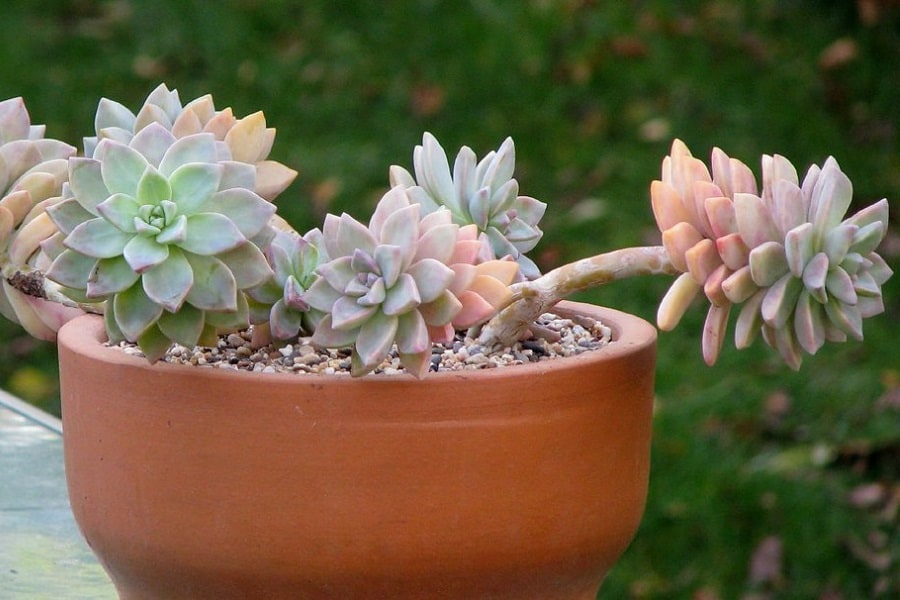
When selecting a haunt for your Graptosedum Ghosty, opt for a well-draining pot slightly larger than its root ball. This succulent doesn’t require frequent repottings – only when it outgrows its current digs. Repot during spring, its active growth phase, using a fresh, porous succulent soil mix.
Pests and Problems
While the Graptosedum Ghosty is a hardy haunter, it can still fall victim to common succulent pests like mealybugs and scale insects. Routinely inspect your plant and treat infestations promptly. Rotting and shriveling leaves are signs of over or underwatering – adjust your watering schedule accordingly to revive your ethereal beauty.
Graptosedum Ghosty Propagation Methods
Graptosedum Ghosty can be propagated through various methods, including offsets, leaf cuttings, and seeds. Each technique offers a unique way to welcome new ghostly companions into your succulent family.
Offset Propagation
- Mature plants will produce offsets (also known as “pups”) from the main stem
- Gently separate these offsets, ensuring they have their own root systems
- Replant the offsets in fresh, well-draining soil and care for them as you would an established plant
Leaf Propagation
- Carefully remove healthy leaves from the mother plant, ensuring you include the leaf base
- Allow the leaf cuttings to callous over for a few days before planting
- Place the calloused leaves on top of a well-draining soil mix and lightly water
- Roots and new growth will emerge in a few weeks, forming tiny new plants
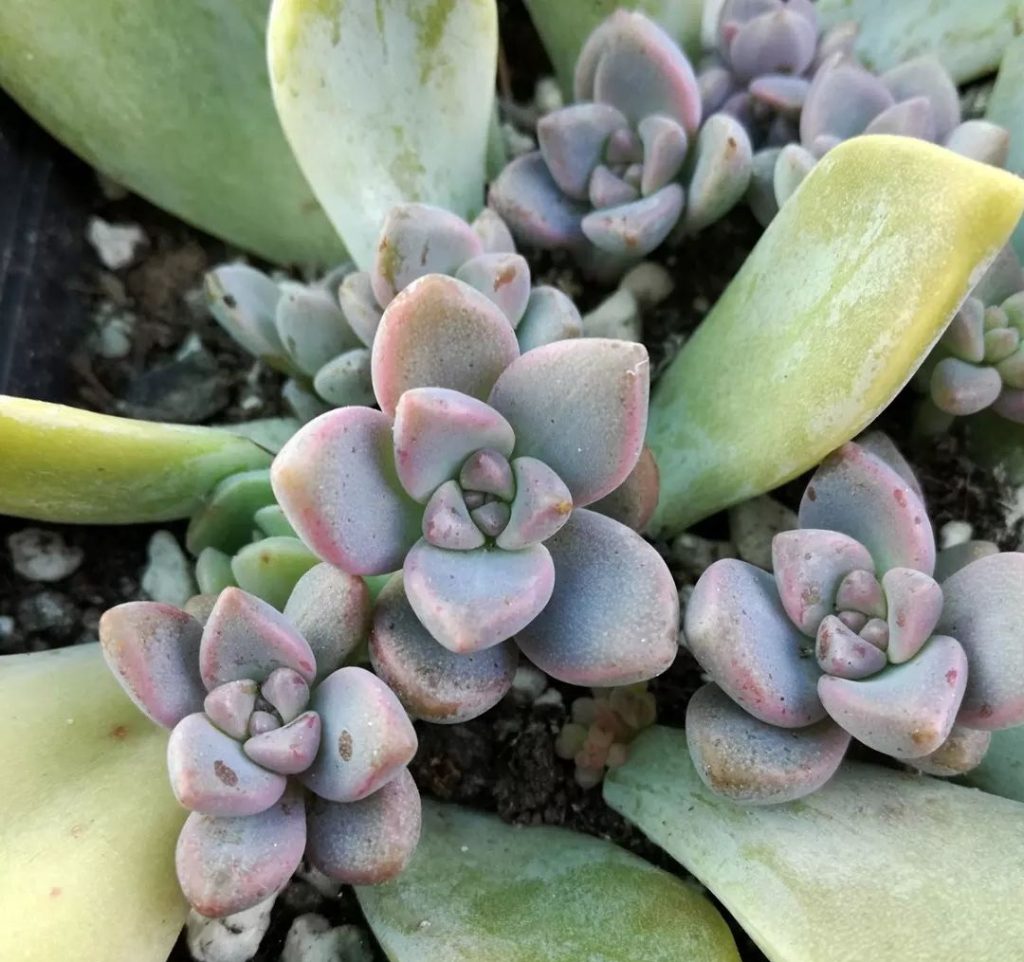
Seed Propagation
- Harvest seeds from mature plants or purchase them from a reputable source
- Sow the seeds in a well-draining seed-starting mix, lightly covering them with soil
- Keep the soil moist but not waterlogged, and be patient as seeds can take several weeks to germinate
- Once seedlings emerge, care for them as you would an established Graptosedum Ghosty
With these propagation techniques at your disposal, you’ll be able to share the haunting allure of your Graptosedum Ghosty with fellow succulent enthusiasts, ensuring that this ghostly gem continues to captivate gardeners for generations to come.
So, what are you waiting for? Invite the mystical Graptosedum Ghosty into your garden and let its ethereal beauty cast a spell over your green space!
